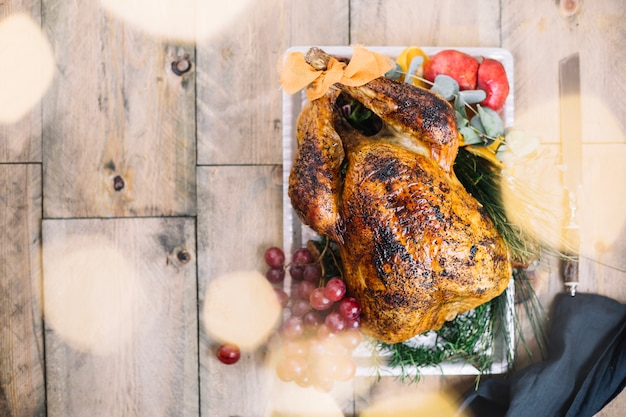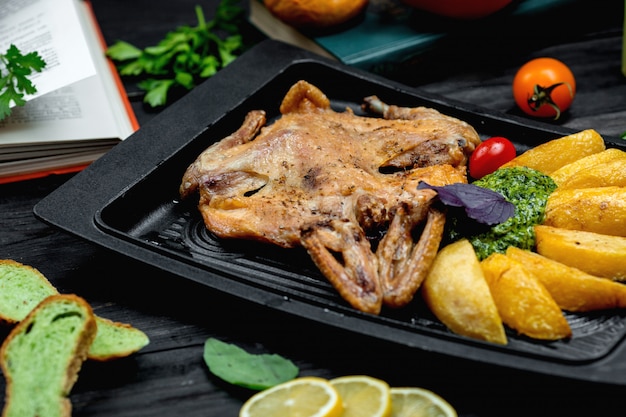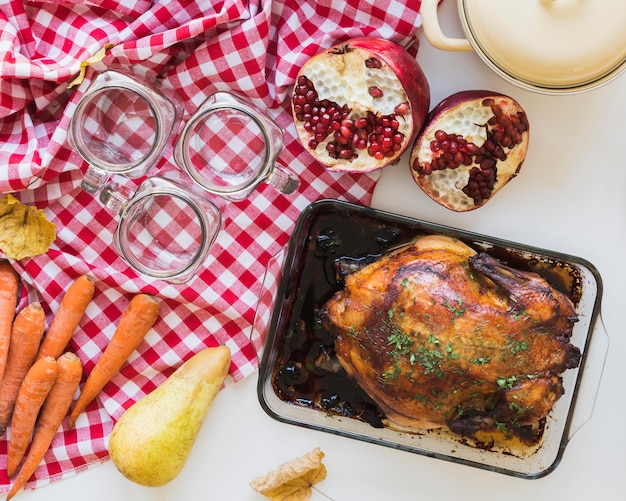You’ve got the craving: a succulent, juicy pork roast, the star of a satisfying Sunday dinner. But let’s face it, getting that perfect roast can feel like a culinary tightrope walk. Too long in the oven, and you're staring down a dry, stringy mess. Too short, and you're left with a pink, undercooked lump of meat. But fear not, my fellow food enthusiasts, because I'm about to spill my secrets for achieving pork roast perfection. Buckle up, because we’re embarking on a journey that’ll leave you saying "blooming brilliant!" with every bite.
(Part 1) The Art of Choosing the Perfect Pork

Before we even think about firing up the oven, let's talk about the star of the show: the pork itself. Now, I'm not going to tell you to raid your savings account for the priciest cut, because honestly, you don't need to. A good quality, but reasonably priced pork roast will do the trick. But, there are a few key things to look for to make sure you're getting the best value for your money.
Selecting the Right Cut
Here's the thing: the world of pork cuts is vast, each with its own unique personality. You've got your shoulder roasts, loin roasts, belly roasts, even sirloin roasts. Personally, I tend to gravitate towards shoulder roasts. They're typically more budget-friendly, and the generous fat content guarantees a juicy, flavorful roast. If you're after a leaner option, go for a loin roast. Just keep in mind, the leaner the cut, the more susceptible it is to drying out.
And remember, don't shy away from bone-in roasts. Not only do they add a wonderful depth of flavor, but they also help to keep the meat moist during cooking.
The Importance of Fat
Speaking of fat, this is your ultimate secret weapon for a succulent pork roast. That luscious layer of fat renders down during cooking, basting the meat and creating a symphony of flavor. A good shoulder roast will have a thick, even layer of fat on the surface, and you'll likely see some marbling throughout the meat. This fat is your friend! It's what makes the roast so incredibly tender and flavorful.
Now, don't worry about excess fat. You can easily trim any unwanted bits after the roast has been cooked. Remember, you're aiming for a healthy balance, not a fat-free frenzy. It's all about enjoying those delicious, melt-in-your-mouth flavours.
Look for Freshness
Okay, I know this might seem like a no-brainer, but you'd be surprised how often people miss this crucial step. Check the sell-by date, and make sure the meat has a nice, healthy colour. Avoid any discoloration, like shades of grey or green, which can be a sign of spoilage. And always, always give the meat a good sniff. If it smells anything other than fresh meat, it's a clear sign to put it back. You don't want to be dealing with dodgy pork, trust me! Your stomach will thank you.
(Part 2) Preparing Your Pork Roast for Perfection

Right, you've got your perfect pork roast, now it's time to get it prepped for the oven. This might seem like a simple step, but there are a few tricks of the trade that can make a world of difference. Let's get into it.
The Art of Seasoning
Before you even think about sticking that pork roast in the oven, you need to season it like a true culinary pro. Now, I'm a firm believer in keeping things simple. Salt and pepper are your best friends here. Generously rub them all over the meat, making sure you get right into the nooks and crannies. You want the flavour to penetrate deeply, creating a symphony of taste with every bite.
If you're feeling adventurous, you can add a sprinkle of rosemary or thyme, but don't go overboard. Remember, you want the beautiful natural flavour of the pork to shine through, not be overpowered by a chorus of herbs.
Fat Makes the Difference
Remember all that fat we were talking about? Well, it's not just about flavour, it's about protection. A thick layer of fat acts as a shield, preventing the meat from drying out during cooking. To help the fat work its magic, I like to score it, creating a criss-cross pattern. This allows the fat to render down more evenly, keeping the meat moist and incredibly flavorful. And don't forget, you can always trim off any excess fat after cooking if you're calorie-conscious.
The Power of Roasting
So, your pork roast is seasoned and ready to go. But before you throw it in the oven, there's one more crucial step: roasting. This step intensifies the flavour, creating a delicious, crispy skin. Grab a large roasting pan and pop your pork roast inside. Now, here's a little trick I picked up from my mum: wrap the pork roast in a piece of bacon. It adds a delicious salty, smoky flavour and keeps the meat juicy. Plus, it looks absolutely stunning! Once the bacon is in place, put your roasting pan on a high heat for about 15 minutes, until the bacon is gloriously crispy and the skin of the pork starts to turn a beautiful golden brown. Then, you're ready to pop it in the oven.
(Part 3) The Oven: Your Pork Roast's Best Friend

Now, the oven is your secret weapon for achieving pork roast perfection. Getting the temperature just right is key, and understanding the importance of time and patience is crucial. Let's break it down.
The Golden Temperature
For a truly delicious pork roast, aim for an oven temperature of 325°F (160°C). This gentle heat allows the meat to cook slowly and evenly, resulting in a tender, juicy roast. Resist the temptation to crank up the heat. A hotter oven will cook the meat too quickly, leading to a dry, tough result. Remember, patience is a virtue in the kitchen, especially when it comes to pork roast.
Time is of the Essence
The amount of time it takes to cook a pork roast depends on its size and weight. A good rule of thumb is to allow about 20 minutes per pound (450g) at 325°F (160°C). So, for a 4-pound (1.8 kg) roast, you'd be looking at around 80 minutes in the oven. But remember, it's always better to err on the side of caution. It's far better to slightly undercook it than to risk overcooking it and ending up with a dry roast.
Don't Be Afraid to Baste
To keep your pork roast moist and flavorful, it's a good idea to baste it regularly. Use the juices that accumulate in the roasting pan, or if you're feeling fancy, whip up a basting sauce with your favorite ingredients. Every 30 minutes or so, take a spoon and spoon the juices over the meat. It's a simple step, but it makes a world of difference in the final result.
And here's a little secret: adding a few tablespoons of water to the bottom of the roasting pan can help create steam, keeping the roast even more moist. You'll be amazed at how much it improves the outcome!
(Part 4) The Tell-Tale Signs of a Perfectly Cooked Pork Roast
Here comes the crucial part: knowing when your pork roast is cooked to perfection. You need to be able to judge its readiness without having to rely solely on the timer. There are a few tricks of the trade that'll help you become a master of pork roast judgment.
The internal temperature
The most reliable way to check if your pork roast is done is to use a meat thermometer. You want the internal temperature to reach 145°F (63°C) for a safe and delicious result. Stick the thermometer into the thickest part of the meat, avoiding the bone, and make sure it's not touching any fat. If you're using a probe thermometer, you can leave it in the meat and set an alarm, so you don't have to constantly check it every few minutes. It's like a little culinary bodyguard for your pork roast.
The Touch Test
If you don't have a meat thermometer, don't despair. You can use the touch test to get a good indication of whether the meat is cooked. Use a fork to poke the thickest part of the roast. If the meat is firm and offers some resistance, it's likely cooked through. If it's still soft and wobbly, it needs more time in the oven.
The Colour Change
Finally, pay attention to the colour of the meat. As the pork roast cooks, it will gradually turn from a pale pink to a lovely golden brown. When it's done, the meat should be a consistent colour throughout, with no signs of pink remaining. However, remember that colour can be deceptive, so always use a meat thermometer or the touch test to confirm. It's better to be safe than sorry, especially when it comes to food safety.
(Part 5) The Rest is Golden
Alright, your pork roast is cooked, and it's looking absolutely scrumptious. But don't be tempted to carve it straight away! It's absolutely essential to give it a good rest before slicing. Think of it as a bit of a well-deserved break for the meat.
Why Resting is Key
Resting allows the juices to redistribute throughout the meat, ensuring that it stays moist and tender. If you carve it immediately, the juices will run out, leaving you with a dry and disappointing roast. So, take a deep breath, relax, and let the pork rest. The wait will be worth it, I promise.
How Long to Rest
As a general rule of thumb, allow your pork roast to rest for at least 15 minutes before carving. For larger roasts, you may want to rest it for longer, up to 30 minutes. Cover it loosely with foil to keep it warm and prevent it from drying out. This is the perfect time to start preparing your sides and gravy, so you're ready to enjoy your culinary masterpiece when it's time to carve.
Carving Time!
After its well-deserved rest, your pork roast is ready for its grand finale. Grab a sharp carving knife, and let the slicing commence. Go against the grain of the meat for tender, juicy slices. And don't be afraid to be generous with the portions! A well-cooked pork roast is a feast for the senses, so enjoy every delicious bite.
(Part 6) Making the Most of Your Pork Roast Leftovers
So, you've enjoyed your delicious pork roast, and now you're left with a few leftovers. But don't despair, because there are a whole load of ways to make the most of them. Here are a few ideas that are sure to tickle your taste buds.
The Classic Sandwich
What's more satisfying than a juicy pork roast sandwich? Not much, that's for sure. Simply slice the leftover pork, pile it high on some crusty bread, and add your favourite toppings. Think crispy lettuce, juicy tomato, a dollop of mustard, and maybe even a bit of gravy. A perfect lunch or a quick and easy supper.
A Hearty Soup
Leftover pork roast is a fantastic base for a hearty soup. Chuck it into a pot with some vegetables, herbs, and broth, and simmer until everything is tender. You can add noodles, rice, or potatoes to make it even more substantial. Perfect for a cold winter day.
A Savory Pie
For something a bit more indulgent, try making a pork roast pie. Simply dice the leftover meat and mix it with some vegetables and gravy. Then, pour the mixture into a pie crust and bake until golden brown. A real comfort food classic that's sure to please everyone.
Pork fried rice
Leftover pork roast can add a delightful savory element to a classic dish like fried rice. Dice the pork into bite-sized pieces, and toss it into your favorite fried rice recipe along with your other favorite ingredients. It's a quick and easy meal that's both satisfying and delicious.
Pork Salad
Slice your leftover pork into strips and toss it into a fresh salad. You can pair it with greens, vegetables, nuts, and a light vinaigrette dressing for a hearty and flavorful meal. It's a great way to enjoy your leftovers and still feel like you're eating healthy.
(Part 7) Tips and Tricks for Pork Roast Perfection
Now, I've shared a whole lot of information with you, but here are a few extra tips and tricks that'll help you elevate your pork roast game.
Don't Overcook It
One of the biggest mistakes people make is overcooking pork roast. It ends up dry, tough, and unappealing. So, remember to use a meat thermometer and stick to the recommended cooking time. It's better to undercook it slightly than to overcook it. If you're worried about undercooking, you can always check the internal temperature with a meat thermometer to ensure it's safe to eat.
Embrace the Fat
Fat is your friend when it comes to pork roast. It adds flavour, keeps the meat moist, and makes for a delicious crispy skin. Don't be afraid to leave a good layer of fat on the meat.
Get Creative with Flavour
While salt and pepper are essential, don't be afraid to experiment with other seasonings. Garlic, onion, rosemary, thyme, and paprika all work wonderfully with pork. You can also add a touch of sweetness with a little honey or maple syrup. A simple rub of garlic powder, onion powder, and paprika can add a wonderful depth of flavor to your roast.
Don't Forget the Gravy
A good gravy can make or break a pork roast. Use the juices that accumulate in the roasting pan to make a rich and flavorful gravy. Don't forget to thicken it with some cornstarch or flour. You can also add herbs like rosemary or thyme to enhance the flavor of the gravy.
Let It Rest
Remember, resting is crucial for a juicy and tender pork roast. Allow it to rest for at least 15 minutes before carving. This gives the juices time to redistribute throughout the meat. While it rests, you can start making your sides or enjoying a glass of wine.
The Magic of Herbs
While salt and pepper are essential, don't be afraid to experiment with a variety of herbs. Fresh rosemary, thyme, sage, and even a bay leaf can add a wonderful depth of flavor to your pork roast. Simply tuck them into the roast or sprinkle them over the meat before cooking.
(Part 8) FAQs: Your Pork Roast Questions Answered
Now, you've probably got a few questions about pork roasting buzzing around in your head. Let's address them.
1. What if My Pork Roast is Undercooked?
If you've accidentally undercooked your pork roast, don't panic. Simply pop it back in the oven and cook it for a little longer, checking the internal temperature regularly. Make sure it reaches 145°F (63°C) for safety. You can also use the touch test and the colour change as indicators.
2. Can I Freeze a Pork Roast?
Yes, you can freeze a pork roast. Wrap it tightly in plastic wrap and aluminum foil, and place it in the freezer for up to 3 months. To thaw it, transfer it to the refrigerator and allow it to thaw overnight. Once thawed, you can cook it as usual.
3. What Happens if I Don't Baste My Pork Roast?
While basting isn't strictly necessary, it does help to keep the pork roast moist and flavorful. If you don't baste, your roast may be slightly drier, but it won't be inedible. However, if you're going for maximum tenderness and flavour, basting is definitely worth the effort.
4. What if My Pork Roast is Too Salty?
If you've over-seasoned your pork roast, there's not much you can do to fix it. However, you can try adding some sweetness to balance out the saltiness. A little honey, maple syrup, or brown sugar can help to counteract the salt.
5. Can I Use a Roasting Bag for My Pork Roast?
Yes, you can use a roasting bag for your pork roast. It helps to lock in moisture and create a tender roast. However, be careful not to overcook it, as the meat can steam in the bag. Use a meat thermometer to check the internal temperature.
And there you have it! My comprehensive guide to creating the perfect pork roast. With these tips and tricks, you'll be well on your way to producing a culinary masterpiece that will impress your family and friends. So, gather your ingredients, fire up your oven, and get ready to enjoy a delicious, juicy pork roast that's sure to become a family favorite.
Everyone is watching

Prime Rib Roast Cooking Time Chart: Per Pound Guide
Cooking TipsPrime rib roast. Just the name conjures images of lavish dinners, crackling fires, and hearty laughter. It’s ...

How Long to Bake Potatoes in the Oven (Perfect Every Time)
Cooking TipsBaked potatoes are a staple in my kitchen. They're incredibly versatile, delicious, and surprisingly easy to m...

Perfect Rice Every Time: The Ultimate Guide to Cooking Rice
Cooking TipsAs a self-proclaimed foodie, I've always been a bit obsessed with rice. It's the foundation of countless cuisi...

The Ultimate Guide to Cooking Asparagus: Tips, Techniques, and Recipes
Cooking TipsAsparagus. The mere mention of this spring delicacy conjures up images of vibrant green spears, crisp and burs...

Ultimate Guide to Cooking the Perfect Thanksgiving Turkey
Cooking TipsThanksgiving. Just the word conjures up images of overflowing tables laden with delicious food, the scent of r...
